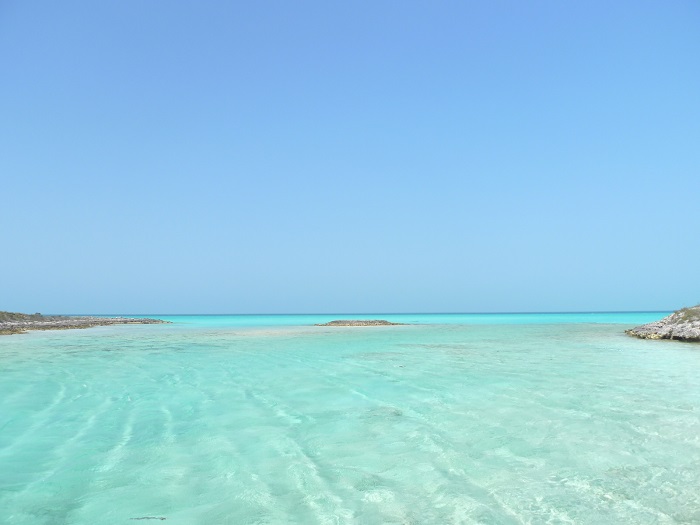Love of Water Runs Deep: WaterFront Living Costs 63% More Than Living on the Land: WSJ
Share News:
 We probably know it deep in our gut, but luxury vacation homes built on the water cost 63% more, on average, than similar properties that are land-locked. This from a global property consultant, Knight Frank, who scrutinized the ten most popular second home destinations around the world.
We probably know it deep in our gut, but luxury vacation homes built on the water cost 63% more, on average, than similar properties that are land-locked. This from a global property consultant, Knight Frank, who scrutinized the ten most popular second home destinations around the world.
And if they have to cover naked beaches with shipped-in sand, or grind down glass to make it, that cost could even go higher. The most expensive waterfront properties in the world are on Italy’s Lake Como, about 30 miles north of Milan. I have been to Lake Como and know full well why. Next is Barbados followed by Phuket in Thailand and central Algarve along Portugal’s southern coast.
The most expensive waterfront properties in the world are on Italy’s Lake Como, about 30 miles north of Milan. I have been to Lake Como and know full well why. Next is Barbados followed by Phuket in Thailand and central Algarve along Portugal’s southern coast.
Then comes sand-poor Miami.
I know I don’t have to explain this to my dear readers: we covet waterfront properties, lake or sea, because they are exclusive and secluded all at the same time. Who does not love falling asleep listening to the surf? Enjoying a glass of wine over a beach-front sunset? That’s why beach front properties and developments such as The Palms and Peninsula Papagayo in Costa Rica, BahaMar in Nassau, Camana Bay in Grand Cayman , Costa Baja in La Paz, Mexico, Honua Kai and the whole state of Hawaii, are gearing up. In fact, beach property everywhere is getting hotter, especially with foreign buyers. The National Association of Realtors reports that as many as a quarter of the buyers in South Florida are from outside the U.S., many looking for waterfront.
According to the Wall Street Journal, true waterfront homes in Lake Como are hard to come by — hence increased value.
“It’s the first question I ask people, ‘Do you want waterfront or lake views?’ Generally speaking, if you can’t see the water, people are not interested,” Mr. Fawcett says. “I’ve had people who have been looking for three, four, five years, but they’re all happy to bide their time. These people appreciate that it’s a rare commodity to get a true waterfront property.”
In the U.S., waterfront properties sell for 60% more than non-waterfront homes in Miami, according to Knight Frank. According to Audrey Ross, senior vice president of Esslinger Wooten Maxwell, an affiliate of Christie’s International Real Estate, sometimes waterfront properties can sell for more than a 100% premium, — double the price of a non-waterfront equivalent.
“The premium goes directly to how high the water is and how wide the views are. Basically, the bigger the view, the higher the price,” she says.
Families with small children may not find waterfront homes desirable, though I always found the vast beach much safer than a swimming pool when my children were babies. They can toddle on a beach, built sand castles, dabble in the water without venturing in too much. Mine were afraid of the surf until they were old enough to be strong swimmers. .
Most investors think buying a waterfront property is like buying gold bars, but there are also expenses involved: higher insurance costs for hurricane and dredging, which municipalities usually cover but turn to taxpayers to fund. There are also tsunamis, which we experienced in a very small way last year in Hawaii when the Four Seasons Kona was evacuated. (This shot was taken right after the water receded.)
Miami is great, but did you know Miami Beach is running out of sand? For many years Miami Beach replaced sand lost to hurricanes and tides by simply pumping it from the ocean floor, which is what most beach communities do. But by 2001, because of the area’s geography, that ended. There are three reef tracks running alongside Miami-Dade and Broward Counties, which make dredging difficult. The continental shelf also narrows greatly here, meaning the ocean gets too deep too quickly.
 Actually, Miami beaches will be out of sand by February. Officials are very concerned that this will affect tourism and those beach houses consumers have paid through the nose for.
Actually, Miami beaches will be out of sand by February. Officials are very concerned that this will affect tourism and those beach houses consumers have paid through the nose for.
Possible solutions include buying sand from nearby St. Lucie, Martin and Palm Beach counties, who have said no, saving their sand for their own beaches. Miami could also buy sand from the Bahamas or Mexico, and ship it in at a hefty price. They are also looking at making sand out of recycled glass. Yes, at one time sand was used to make glass, so this is a simply a reversal process:
Broward County is exploring the cost of recycling glass to fill small gaps in its beaches — it is more costly than offshore sand, but it is not yet clear by how much. Broward would also have to find a nearby facility to process the glass and complete the final phase of its environmental study. Other states have used recycled glass, but mostly for small projects like golf courses.
For now, the idea remains on the table. It is creative, said Ms. Jacobs, the Broward County mayor. It could promote a market for glass, she added.
Broward is looking to finance the last part of its environmental study, and will weigh the costs. The sand has so far proved an excellent mimic of regular sand, which is used to produce glass, after all. “If we could generate our own sand,” Ms. Jacobs said, “it would be fantastic.”



[…] Love of Water Runs Deep: WaterFront Living Costs 63% More Than … […]
[…] These and other soothing post-summer-vacation thought will make you happier than ever to be land-locked in Dallas… over on SecondShelters.com… […]